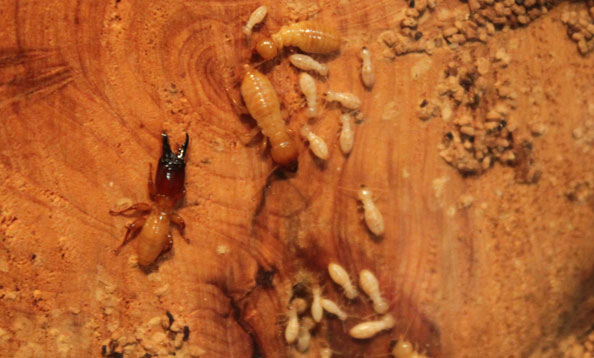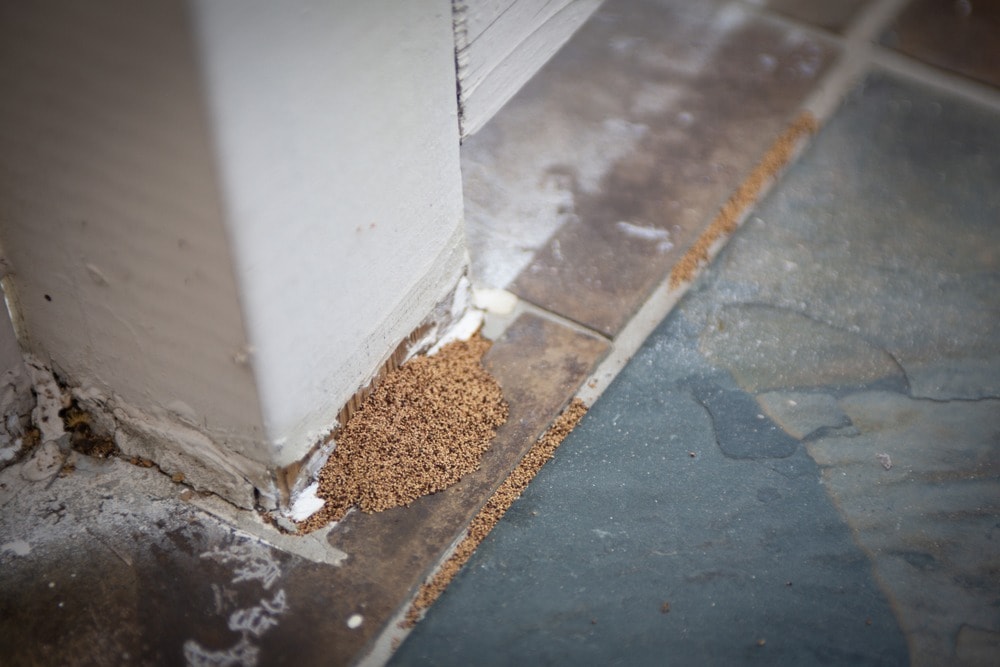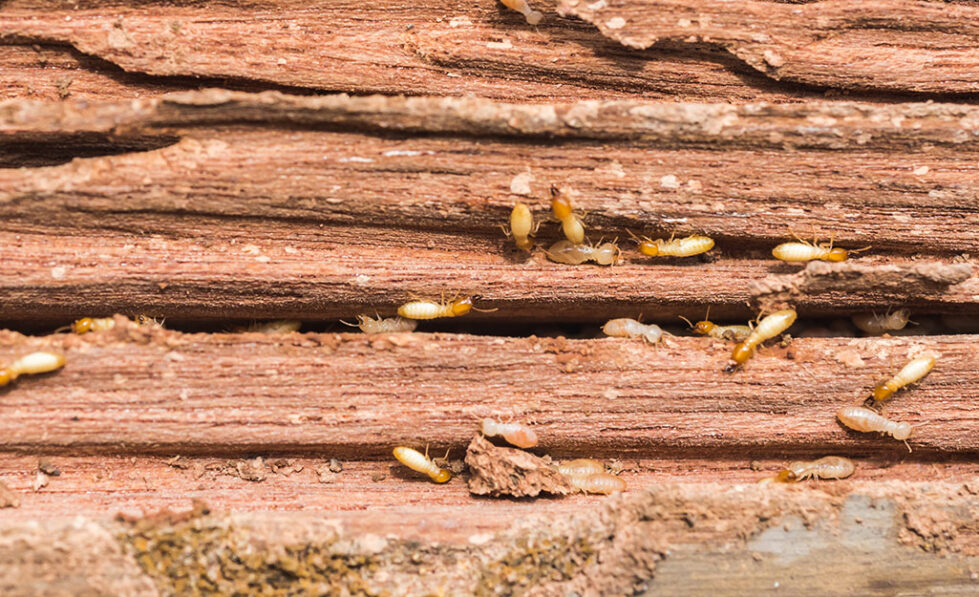Do you suspect you have a termite problem? Every year termites cause billions of dollars in structural damage, and property owners spend over two billion dollars to treat them. This blog post answers questions about common termite problems around your home and how you can identify and help protect your property from termites through effective prevention measures.
What Causes Termites?
Termites are attracted to wood in general, but they individually have their own preferences. Dampwood termites prefer moist wood (i.e. rotting wood, fallen trees, damp climates), while drywood termites prefer dry wood. There must be moist soil nearby in order for subterranean termites to thrive.
Dampwood termites are generally brown in color, but can range from dark to light, and can even be reddish, especially towards their abdomens. Nymphs are cream-colored. This species needs regular contact with water and high humidity to survive. This makes them very different from drywood termites.

Subterranean termites also build mud tubes to go from the soil to the wood they feed on. It is a “link” for the termites to use as a means of protecting themselves from dehydration and gaining access to wood that is above ground. Termites can be introduced into a house through untreated firewood or untreated lumber, which homeowners may not be aware of.
Moisture, timber in contact with house foundations, and cracks in building exteriors also attract termites. Different animals are attracted to different combinations of these elements. In addition, where a home is located has an impact on how probable it is to be infested. Southern states are more prone to be infested with termites because of the region’s warm weather and constant humidity.
The sooner termites are identified and eliminated, the better. An infestation can be quite costly in terms of both money and time. It’s preferable to be cautious than sorry in this circumstance, so be aware of the warning indications. That’s why we’d like to go through some of the symptoms that you might have a termite problem.
Signs of Termites in Your Home
Mud Tubes
Subterranean termites make mud tubes (or shelter tubes) as they travel from the earth into structures and homes to build their colonies. Termites use mud tubes to navigate across their colonies, which can be found in corners and cracks between surfaces. If you detect unusual buildups or mud/dirt in unusual places, it’s possible that termites have infiltrated your home.
Paint that is Bubbling or Cracked
Examine the drywall and baseboards in the house when evaluating the inside of the house. If you detect any bubbling or flaking paint on your baseboards, it could be an indication of a termite infestation. Internal drywall and ceiling damage typically looks like minor water damage and goes undiscovered.
Blistering on Wood Floors or Walls
Wood that has been damaged or has a hollow sound
While the home’s timber construction may appear to be in fine condition on the surface, there may be harm underneath. Termites favor dark, damp environments, so they rarely leave their work apparent within your home. Simply tapping on surfaces and listening for a hollow sound can indicate the presence of termite damage.
Discarded Termite Wings
When termite season arrives, swarms of termites take to the air in search of a suitable location to establish their colonies. They’ll settle in and start building once they’ve located a good spot, leaving their wings behind in the process. Keep an eye out for termite wings that have been discarded; this is a good clue that a colony may already exist nearby.

Termite Droppings
When termites eat through wood within a home, they create a significant amount of droppings known as “frass.” These droppings collect in diverse locations and at first, the look may appear to be a collection of tiny birdseed.
Concerned you may have a termite problem? Don’t wait until it gets worse. You should get professional advice to determine whether or not you have an infestation. Call our team right away if you suspect a problem or would like to schedule a termite inspection.

